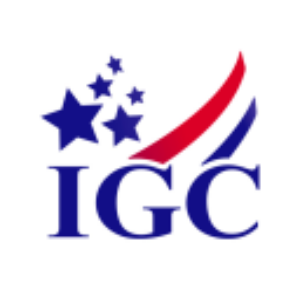Phase 1 Clinical Trial Provides Valuable Insights on Safe and Effective Dosing of IGC-AD1 for Alzheimer’s Patients
India Globalization Capital, Inc. (IGC) has announced preliminary results from its Phase 1 clinical trial for IGC-AD1, a cannabis-based drug candidate for Alzheimer’s disease. Key insights into pharmacokinetics and genotyping have been obtained, crucial for determining optimal dosing in future trials pending FDA approval. The trial showed mean Tmax values of 2.15 hours for THC and 1.9 hours for OH-THC, and mean T1/2 values of 3.60 hours for THC and 3.30 hours for OH-THC, suggesting safe dosing frequencies. Further trials are planned to establish the drug's safety and efficacy.
- Successful Phase 1 trial results indicating safe dosing frequency of 2-3 times daily.
- Valuable pharmacokinetic insights crucial for future trials.
- Potential to address significant unmet medical needs in Alzheimer's treatment.
- IGC-AD1 is still in preliminary stages with no regulatory approval.
- Further clinical trials required to affirm safety and efficacy.
Insights
Analyzing...
The clinical trial results were submitted in the Clinical/Statistical Report (“CSR”) filed with the FDA on
Alzheimer’s disease impacts about 50 million people worldwide, and approximately
Pharmacokinetics
Pharmacokinetics studies how long it takes for the body to absorb, process, metabolize, and eliminate a drug after being administered. Understanding how long it takes a drug to produce the intended effects and when those effects will diminish can help determine the appropriate and safe frequency of dosing.
Tetrahydrocannabinol (THC), the principal psychoactive component of cannabis, is metabolized by the CYP4502C9 enzyme. This enzyme is also responsible for metabolizing and eliminating many other families of drugs, including S-warfarin, tolbutamide, phenytoin, losartan, diclofenac, and celecoxib. The CYP4502C9 enzyme converts THC to its active metabolite OH-THC.
The trial measured Tmax, the length of time it takes for the substance to reach its maximum concentration in the body, and T1/2, which is the length of time it takes for the concentration to decline to half the Tmax value. These two metrics provide guidance on when the maximum effects of the drug will be felt and when the impact of the drug will start to decline significantly. We measured Tmax and T1/2 for both THC and the metabolized substance OH-THC.
- The mean Tmax was 2.15 hours (range 1.0-3.5) for THC and 1.9 hours (range 1.0-4.0) for OH-THC
- The mean T1/2 was 3.60 hours (range 0.7-12.87) for THC and 3.30 hours (range 1.05-5.7) for OH-THC
These results indicate that dosing two or three times per day may be safe for patients, as the first and potentially second dose would be eliminated from the body before subsequent doses are given.
Genotyping
The CYP2C9 gene encodes the cytochrome CYP2CP enzyme. This gene is highly polymorphic, which means not everyone makes the gene in the same way. Variations in the gene can impact the level of enzyme activity and how quickly the bodily metabolizes substances, including THC. These variations are stratified into groups of metabolizers - poor (PM), intermediate (IM), normal (NM), and ultra-rapid (UM) (Gaedigk A, et al., 2008; Caudle K E, et al., 2017)
We used a blood test to determine that
The Tmax values were close for IM and NM participants. However, the T1/2 of THC and OH-THC did vary. This indicates, subject to more trials, that optimal dosing frequency could vary based on a person’s polymorphism of the CYP2CP gene.
- THC: Tmax was 2.38 hours for the NM group and 2.00 hours for the IM group
- OH-THC: Tmax 1.75 hours for the NM and 2.00 hours for the IM group
- THC: T1/2 was 1.73 hours for the NM group and 5.09 hours for the IM group
- OH-THC: T1/2 was 2.98 for the NM group and 3.51 hours for the IM group
We plan to use the results from this study to inform the design of Phase 2 and Phase 3 clinical trials, subject to FDA approval. IGC-AD1 is an investigational new drug that has not been approved as a medication by any regulatory body in any country. Although the Phase 1 trial has been completed, and certain data has been collected, IGC-AD1’s safety, tolerability, and efficacy need to be further established through trials on larger and more diverse groups of Alzheimer’s patients.
About IGC:
www.igcinc.us, www.igcpharma.com.
Forward-Looking Statements:
This press release contains forward-looking statements within the meaning of Section 21E of the Securities Exchange Act of 1934. These forward-looking statements are based largely on IGC’s expectations and are subject to several risks and uncertainties, certain of which are beyond IGC’s control. Actual results could differ materially from these forward-looking statements as a result of, among other factors, the Company’s failure or inability to commercialize one or more of the Company’s products or technologies, including the investigational new drug or formulation described in this release, or failure to obtain FDA approval for the investigational new drug or additional clinical trials; testing results from human clinical trials that may not be favorable or as anticipated or consistent with the results obtained from Phase 1 trials; general economic conditions that are less favorable than expected, including as a result of the ongoing COVID-19 pandemic; the FDA’s general position regarding cannabis- and hemp-based products; and other factors, many of which are discussed in IGC’s
View source version on businesswire.com: https://www.businesswire.com/news/home/20211208006098/en/
info@igcinc.us
Phone: 301-983-0998
Source:







